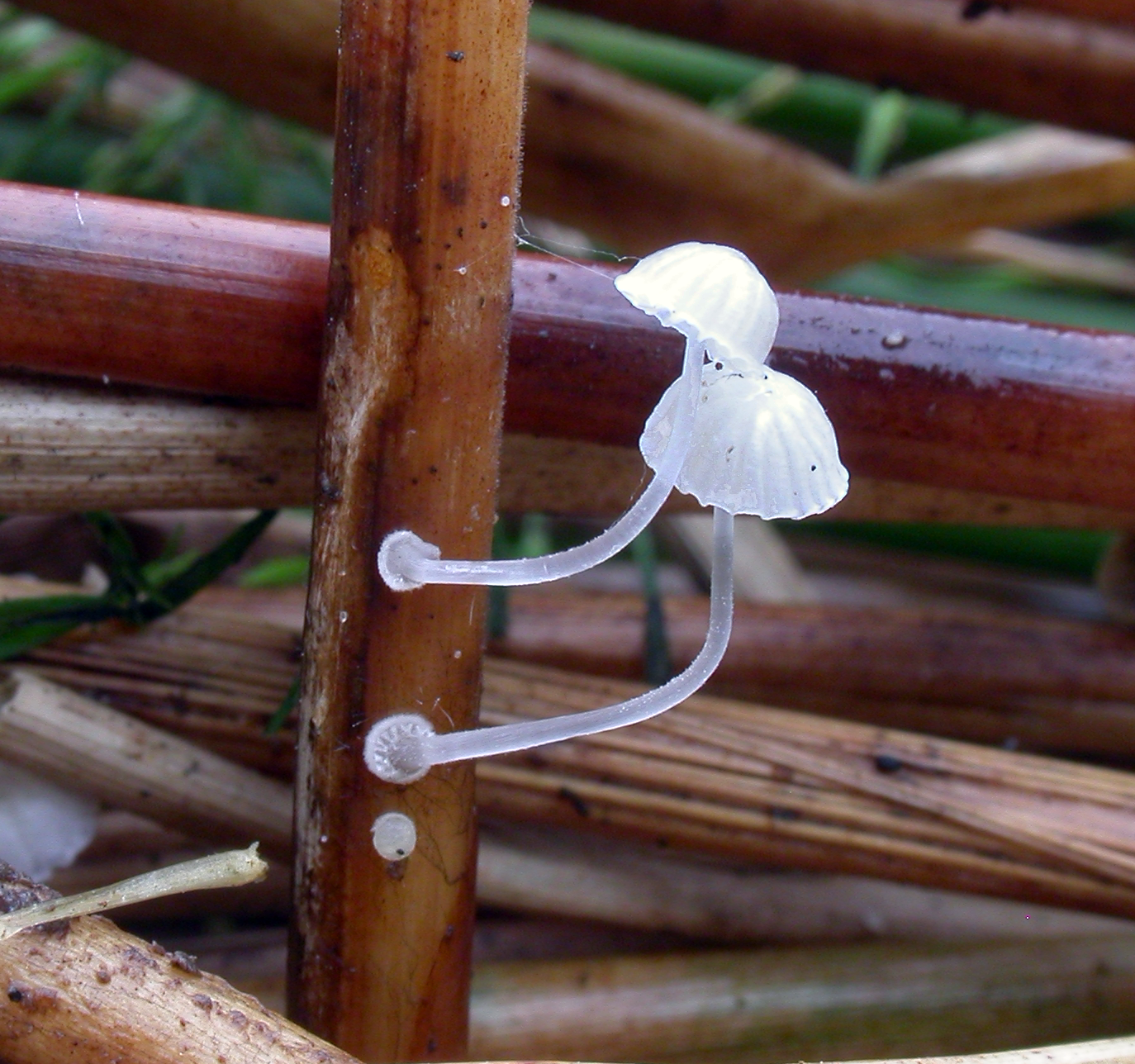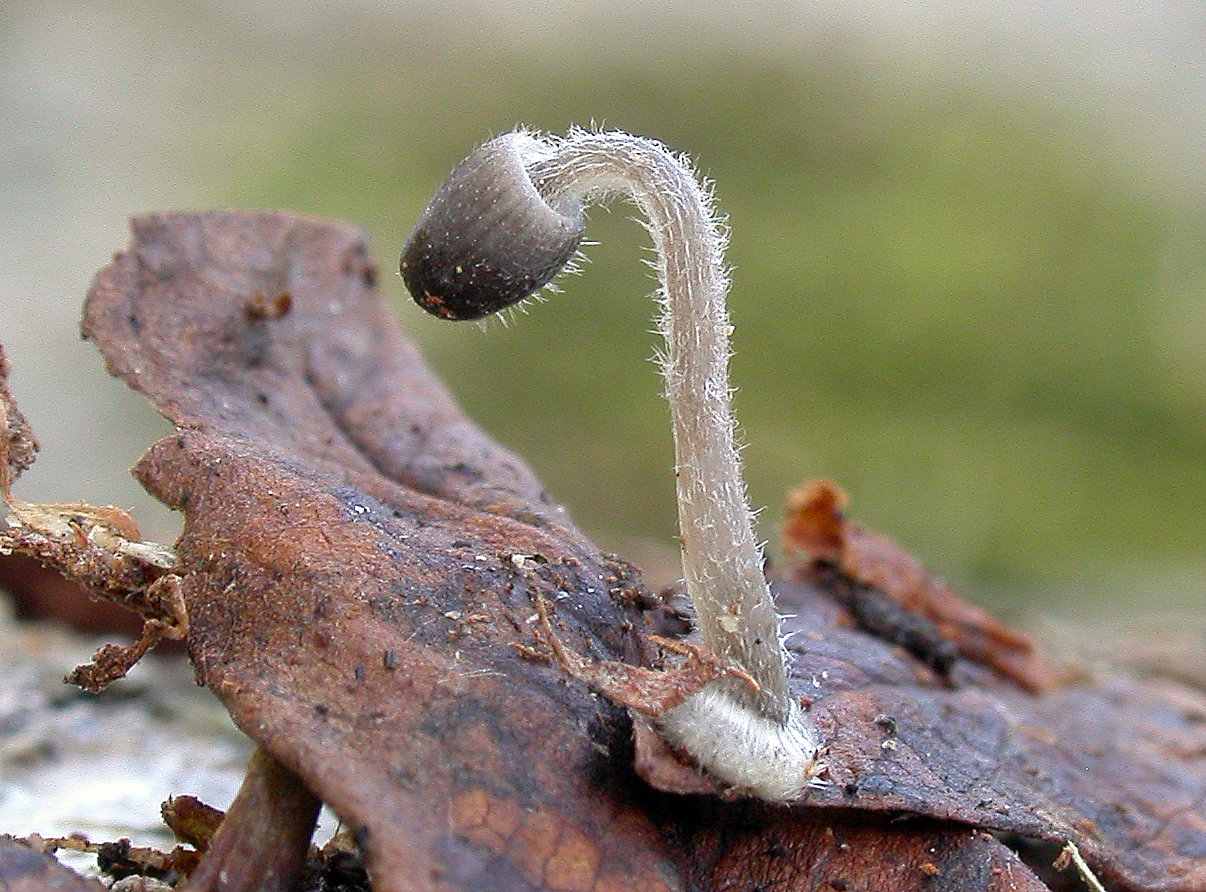Mycena stylobates
Mycena stylobates
Description
Hypha of the pileipellis, spores, cheilocystidia and caulocystidium.
Cap 4-10 mm across, viscid, covered with a separable, gelatinous pellicle, conical to planoconvex, sulcate, translucent-striate, glabrous or with a few small spines centrally, pale grey-brown to greyish white. Gills 14-18 reaching the stem, adnexed to free, often forming a pseudocollarium, white to greyish white. Stem 15-35 x 0.3-1 mm, fragile, cylindrical, pruinose above, glabrous farther below, watery grey to white, springing from a basal disc which is up to 2 mm across, sulcate, pubescent, white, with a ciliate margin. Odour none. Basidia 17.5-25 x 6-8 µm, clavate, 4-spored, with sterigmata up to 5 µm long. Spores 7.5-10.5 x 3.5-5 µm, Q = 1.6-2.7, Qav ˜ 1.9-2.1, elongated pip-shaped to almost cylindrical, amyloid. Cheilocystidia 20-60 x 6-11.5 µm, irregularly clavate, fusiform or almost cylindrical, with few to numerous variously shaped, and often coarse excrescences with rounded apices. Pleurocystidia absent. Lamellar trama dextrinoid. Hyphae of the pileipellis 2.5-6 µm wide, variously branched, smooth or densely covered with warts or short cylindrical excrescences 1-3 x 1 µm, embedded in a gelatinous matter. Hyphae of the cortical layer of the stem ca 2 µm wide, smooth with scattered caulocystidia 45-80 x 7-8 µm, fusiform, smooth. Clamps present in all tissues.
Ecology and distribution
Solitary or in small groups on fallen twigs, leaves, coniferous needles, dead culms of grasses etc. Summer to autumn. Widely distributed in Norway.




